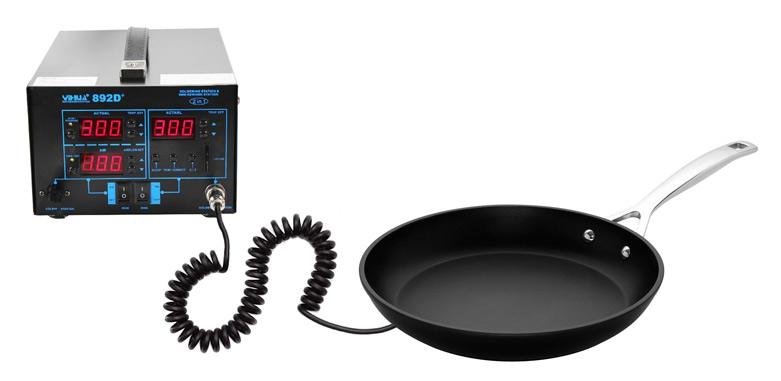
Decent Electric Hob
11 Oct 2014Progress: Concept
"Electric hobs are much better than they used to be," they said, "they're just as good as gas!"
Bollocks. The problem has always been the confusion between, and difficulty controlling, temperature and heat flow. The easiest way to compensate for a cheap thermostat is to increase the thermal mass, leading to longer warmup times and further frustration. The worst bit is how unrepeatable the outcome is; unlike gas, going from one hob to another leads to wildly varying results.
But there is a way to be scientific about it without breaking the consumer budget - the same method used by my soldering iron. You have three simple displays:
• Actual Temperature
• Target Temperature
• Current Draw (power usage)
The benefit of watching the current draw, at a fixed hob temperature, is that you can deduce the heat flow without knowing the temperature of the item you're heating. This information is invaluable when frying an egg.
I acknowledge that a 1kW PWM power supply might be expensive, so compromise: 10 heating elements of 100W each, just toggled on and off by the circuit as necessary.
The results might not be the same as gas, but one thing is certain. They would be repeatable.
The final thing gas has to offer is being able to tilt the pan without much effect on heat flow. Only thing I can think of to tackle this is to have the elements fixed directly to the pan. Perhaps, with its reduced overall mass, the hot plate could be removable with a cord running to the controller in the worktop.

Supreme temperature control.